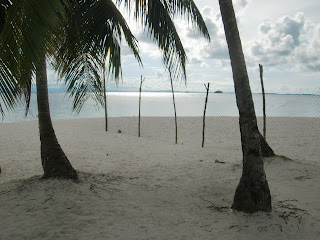Are you about to graduate but haven't yet decided on a career path? Have you always wanted to learn a foreign language? Are you interested in travelling the world while you're still young?
If you answered 'yes' to any of the above questions, perhaps you might consider teaching English as a foreign language (TEFL). Though it might sound crazy to your friends and family, it's not such a bad idea, especially given the current economic situation. If you are concerned about the job outlook in your current area and are open to new adventures in foreign lands, taking a year or two off to explore the world around you could be a very promising investment in your professional future.
One of the biggest benefits to be gained from teaching overseas is foreign language skills. After studying Spanish for two years in college, I can now boast fluency as well as basic language capabilities in Brazilian Portuguese. In addition to the personal strength associated with relocating and assimilating to a foreign culture, the leadership skills cultivated by teaching abroad are impressive on a resume, regardless of your professional background. And the best part is that you don't even need a teaching degree.
To teach abroad, all you need to do is speak English as your native language and enroll in a TEFL or TESOL program. To break down the acronyms, TEFL (Teaching English as a Foreign Language) is used to teach outside the United States while ESL (English as a Second Language) is obtained to teach within the US. TESOL (Teaching English to Speakers of other Languages) includes both TEFL and ESL.
TEFL and TESOL degrees are offered through a variety of companies and schools that provide both online and in-person courses. The cheapest option is online certification (examples include teflinstitute.com, teflcertificate.com, teflonline.com, teflcertificatecourses.com, and many more), with most programs charging about $1,000 USD for a 6 - 10 week course, though discounts are sometimes available. Most of these also offer in-person courses, which usually cost between $500 - 1,000 more than the online version, but are usually accompanied by guaranteed job placement in the area of study. It's important to thoroughly research a company's reputation before agreeing to take its course, as some programs are more internationally recognized than others.
An alternate route is to obtain the CELTA (Certificate of English Language Teaching to Adults) offered by Cambridge, which is more expensive but probably the most widely recognized of the English teaching degrees. This can be followed up with the DELTA (Diploma of English Language Teaching to Adults) for those who are interested in a long-term teaching career. For the most part, TEFL and TESOL certifications are more common among those who are only interested in short-term teaching positions.
Note that when considering online options, you should never enroll in a course that's less than 120 hours. This is because most standard, internationally recognized TEFL programs require at least 120 hours (100 teaching hours and 20 student teaching hours) for their certifications. If you see a site that offers a 60-hour certification, beware. This might be a cheaper option, but the schools to which you apply will most likely require a 120-hour certification from their job applicants.
Another route for those who are current or recently-graduated students is AIESEC, the largest student-driven organization in the world. AIESEC members have the opportunity to work and study abroad through internships in a variety of areas (business, technology, teaching, etc.). After paying the joining fee, students gain access to the international internship database and are free to apply for any positions they wish. AIESEC also qualifies as a cheaper option for those interested in teaching, as most schools do not require a TEFL or TESOL certificate to apply (though they do ask that applicants have some teaching experience). Once matched with a position abroad, students must pay an additional matching fee of several hundred USD (the amount depends upon the type of position).
If you are interested in pursuing any of these options or want more details, feel free to contact me or leave a comment. More posts to come!




































